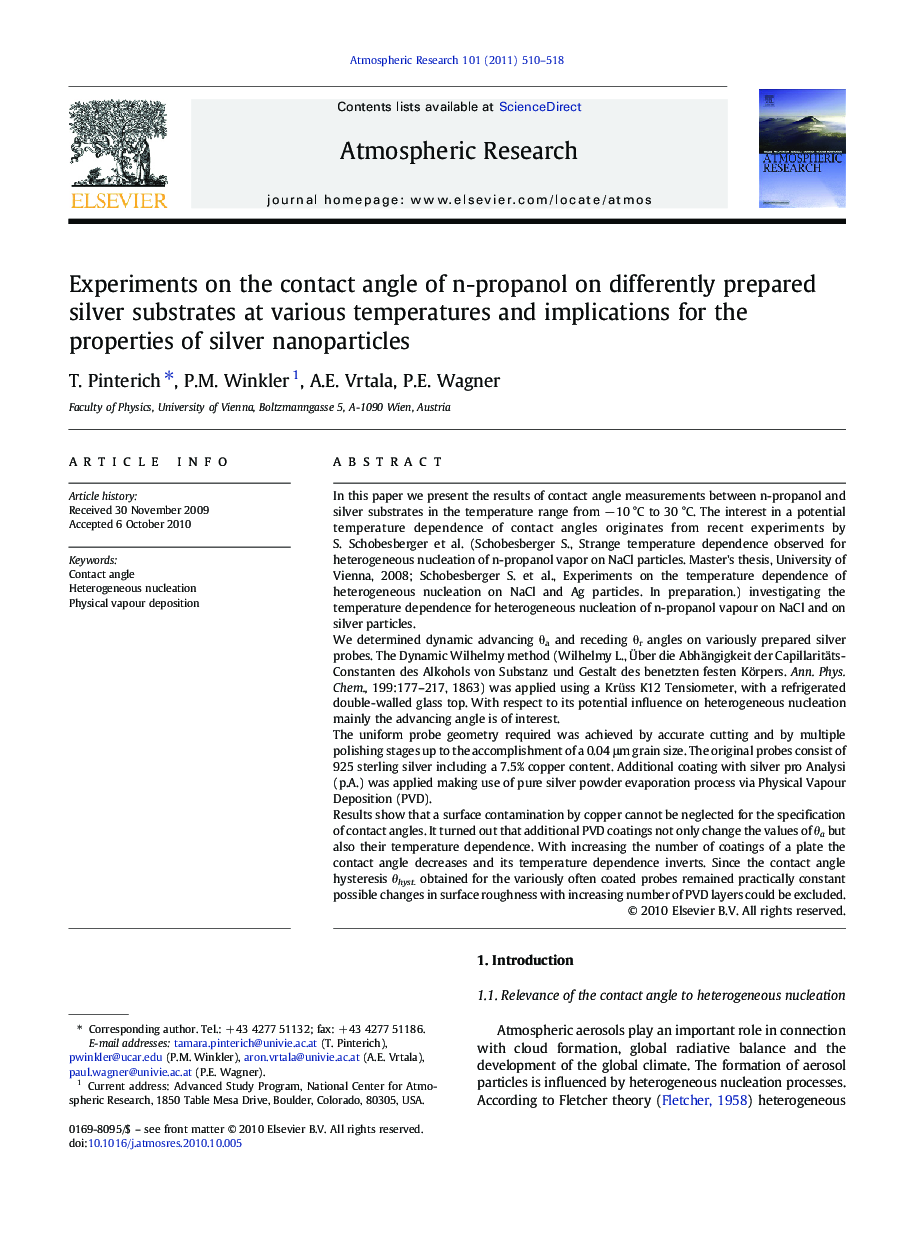| Article ID | Journal | Published Year | Pages | File Type |
|---|---|---|---|---|
| 4450330 | Atmospheric Research | 2011 | 9 Pages |
In this paper we present the results of contact angle measurements between n-propanol and silver substrates in the temperature range from −10 °C to 30 °C. The interest in a potential temperature dependence of contact angles originates from recent experiments by S. Schobesberger et al. (Schobesberger S., Strange temperature dependence observed for heterogeneous nucleation of n-propanol vapor on NaCl particles. Master's thesis, University of Vienna, 2008; Schobesberger S. et al., Experiments on the temperature dependence of heterogeneous nucleation on NaCl and Ag particles. In preparation.) investigating the temperature dependence for heterogeneous nucleation of n-propanol vapour on NaCl and on silver particles.We determined dynamic advancing θa and receding θr angles on variously prepared silver probes. The Dynamic Wilhelmy method (Wilhelmy L., Über die Abhängigkeit der Capillaritäts-Constanten des Alkohols von Substanz und Gestalt des benetzten festen Körpers. Ann. Phys. Chem., 199:177–217, 1863) was applied using a Krüss K12 Tensiometer, with a refrigerated double-walled glass top. With respect to its potential influence on heterogeneous nucleation mainly the advancing angle is of interest.The uniform probe geometry required was achieved by accurate cutting and by multiple polishing stages up to the accomplishment of a 0.04 μm grain size. The original probes consist of 925 sterling silver including a 7.5% copper content. Additional coating with silver pro Analysi (p.A.) was applied making use of pure silver powder evaporation process via Physical Vapour Deposition (PVD).Results show that a surface contamination by copper cannot be neglected for the specification of contact angles. It turned out that additional PVD coatings not only change the values of θa but also their temperature dependence. With increasing the number of coatings of a plate the contact angle decreases and its temperature dependence inverts. Since the contact angle hysteresis θhyst. obtained for the variously often coated probes remained practically constant possible changes in surface roughness with increasing number of PVD layers could be excluded.
